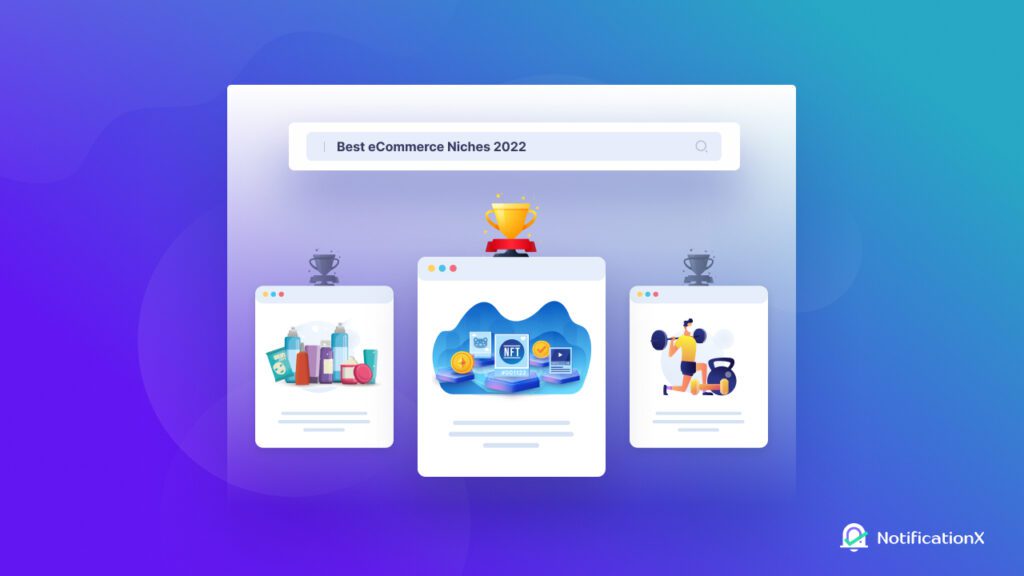Imagine a world where affiliate marketing becomes more efficient and successful than ever before. Well, thanks to the incredible advancements in artificial intelligence and predictive analytics, that world is rapidly becoming a reality. In this article, we will explore how these groundbreaking technologies are revolutionizing the world of affiliate marketing, enabling businesses to optimize their strategies, make data-driven decisions, and tap into endless opportunities for growth. Get ready to discover the immense potential of artificial intelligence and predictive analytics in shaping the future of affiliate marketing.
Affiliate Marketing Academy – Get it here
Automating Affiliate Marketing Processes
Affiliate marketing is a popular method for businesses to expand their reach and increase sales. However, managing and optimizing affiliate marketing campaigns can be time-consuming and labor-intensive. That’s where AI comes in. By leveraging the power of artificial intelligence, affiliate marketers can automate various processes to streamline their operations and drive better results.
Using AI to Generate Affiliate Links
One of the key aspects of affiliate marketing is promoting and sharing affiliate links. Traditionally, affiliates had to manually generate and insert these links into their content. This manual process not only consumed a significant amount of time but also increased the chances of errors. However, AI technology now enables the automatic generation of affiliate links. With AI-powered tools, affiliates can easily create and insert their unique links without any hassle. This automation not only saves time but also ensures accuracy and effectiveness in link placement.
Automating Ad Placement and Optimization
Another area where AI can revolutionize affiliate marketing is in ad placement and optimization. Traditionally, affiliates had to manually select and optimize ad placements to maximize their conversions. However, with AI, this process can be fully automated. AI algorithms can analyze user behavior, identify the most effective ad placements, and automatically optimize them for better performance. This not only saves affiliates time and effort but also ensures that their ads are strategically placed to reach the right audience at the right time, maximizing the chances of conversions.
AI-Powered Content Generation for Affiliates
Creating compelling content is essential for successful affiliate marketing. However, constantly generating engaging content can be challenging and time-consuming. AI-powered content generation tools can help affiliates overcome this hurdle. By analyzing data and insights from various sources, AI algorithms can generate high-quality content that is tailored to the interests and preferences of the target audience. These AI-generated articles, blog posts, and social media captions not only save affiliates time and effort but also maximize the impact of their content by delivering valuable and relevant information to their audience.
Enhancing Targeted Advertising
In affiliate marketing, targeted advertising is crucial for reaching the right audience and driving conversions. AI technologies offer a range of solutions to enhance targeted advertising efforts, allowing affiliates to optimize their campaigns and increase the effectiveness of their promotional efforts.
Leveraging AI to Analyze User Behavior
Understanding user behavior is key to creating targeted advertising campaigns. AI-powered analytics tools can analyze large amounts of data to identify patterns, preferences, and trends in user behavior. By leveraging this information, affiliates can gain valuable insights into their target audience’s interests and behavior, enabling them to create more personalized and effective ad campaigns.
Personalizing Ad Content with AI
Generic, one-size-fits-all advertising content often fails to resonate with audiences. AI technology enables the creation of personalized ad content that speaks directly to individual users’ interests and needs. By analyzing user data and behavior, AI algorithms can generate highly targeted and personalized ad content, increasing the chances of driving conversions. This personalized approach enhances the overall user experience and helps affiliates stand out in a crowded market.
Dynamic Ad Optimization with AI
In a fast-paced digital landscape, it is crucial to continually optimize ad campaigns to stay ahead of the competition. AI tools can automate the process of ad optimization by constantly analyzing campaign performance data and making real-time adjustments. These AI algorithms can dynamically optimize ad visuals, messaging, and targeting parameters to ensure maximum effectiveness. By leveraging AI for ad optimization, affiliates can improve their campaigns’ efficiency and drive higher conversion rates.

Affiliate Marketing Academy – Check it out
Improving Affiliate Program Management
Managing affiliate programs involves recruiting, selecting, and managing a network of affiliates who promote a company’s products or services. AI technology can significantly improve the efficiency and effectiveness of affiliate program management, making it easier for businesses to maximize their affiliate marketing initiatives.
AI-Based Affiliate Selection and Recruitment
Finding the right affiliates to promote a brand is crucial for success in affiliate marketing. AI-powered tools can assist in the selection and recruitment process by analyzing various factors such as audience demographics, niche relevance, and performance history. By leveraging AI algorithms, businesses can identify potential affiliates who are more likely to generate results and build mutually beneficial partnerships.
Automated Commission and Payout Management
Managing commissions and payouts to affiliates can be a time-consuming task. AI-powered tools can automate this process by tracking affiliate sales, calculating commissions, and processing payments automatically. This automation not only saves time but also ensures accuracy and transparency in commission management. Affiliates can track their earnings in real-time, improving trust and satisfaction in the affiliate program.
Optimizing Affiliate Relationships with AI
Maintaining strong relationships with affiliates is crucial for long-term success in affiliate marketing. AI technology can help businesses optimize their affiliate relationships by providing insights and recommendations based on historical data and performance metrics. AI algorithms can identify trends, patterns, and opportunities for improvement, enabling businesses to provide better support and guidance to their affiliates. By leveraging AI insights, businesses can strengthen their affiliate relationships and drive better results.
Enhancing Affiliate Fraud Detection
Affiliate fraud can undermine the credibility and effectiveness of an affiliate marketing program. Detecting and preventing fraudulent activities is essential for maintaining the integrity of the program and protecting the interests of both businesses and affiliates. AI technology offers robust solutions for detecting and preventing affiliate fraud.
Using AI to Identify Fraudulent Activities
AI algorithms can analyze large datasets and detect patterns that indicate fraudulent activities. By continuously monitoring affiliate activities, AI-powered systems can identify suspicious behavior or traffic anomalies. This proactive approach helps businesses quickly identify and address potential fraud instances, minimizing the impact on the program’s performance and profitability.
Real-Time Monitoring for Suspicious Behavior
Real-time monitoring is crucial for detecting affiliate fraud promptly. AI-powered systems can monitor affiliate activities in real-time, flagging any suspicious behavior or patterns. By using AI technology, businesses can promptly identify and address potentially fraudulent activities, preventing financial losses and protecting the program’s reputation.
AI-Powered Fraud Prevention Techniques
AI technology can also be used to prevent affiliate fraud before it occurs. By analyzing historical data and patterns, AI algorithms can identify potential fraud risks and implement preventive measures. AI-powered fraud prevention techniques, such as anomaly detection and machine learning algorithms, can proactively identify potential fraud threats and enhance the overall security and integrity of the affiliate marketing program.
Increasing Conversion Rates
Driving conversions is the ultimate goal of affiliate marketing. AI technology offers various tools and techniques to optimize promotional efforts and increase conversion rates.
Predictive Analytics for Targeted Promotions
Predictive analytics leverages AI algorithms to forecast future user behavior and identify optimal promotional strategies. By analyzing historical data and user behavior patterns, AI algorithms can predict which promotions are more likely to drive conversions. This allows affiliates to focus their efforts on the most promising campaigns, maximizing their chances of success.
AI-Driven Personalized Product Recommendations
Personalized product recommendations can significantly enhance the user experience and drive conversions. AI technology can analyze user behavior, preferences, and purchase history to generate tailored product recommendations. By leveraging AI-driven personalization, affiliates can provide targeted recommendations that align with each user’s interests and needs, increasing the likelihood of conversions.
Real-Time Optimization of Landing Pages
In affiliate marketing, landing pages play a crucial role in driving conversions. AI algorithms can analyze user behavior, engagement metrics, and conversion data to optimize landing pages in real-time. This includes adjusting page layouts, content, and call-to-action elements based on user preferences and behaviors. Real-time optimization ensures that landing pages are always at their best, improving the chances of capturing user interest and driving conversions.
Optimizing SEO for Affiliate Marketing
SEO is a vital aspect of affiliate marketing, as it helps affiliates attract organic traffic and increase their visibility in search engine results. AI technology can optimize SEO efforts, enabling affiliates to maximize their organic reach and drive more traffic to their promotions.
AI-Based Keyword Research and Optimization
Choosing the right keywords is crucial for SEO success. AI-powered tools can analyze search trends, competitor data, and user behavior to identify the most relevant and effective keywords for affiliate promotions. By leveraging AI-based keyword research, affiliates can significantly improve their SEO strategies and increase their chances of ranking higher in search results.
Content Generation and Optimization with AI
Creating high-quality and SEO-friendly content is essential for affiliate marketing. AI technology can assist in content generation and optimization by suggesting suitable topics, structuring content, and ensuring keyword integration. AI algorithms can also analyze content performance data and provide recommendations for improvement, ensuring that affiliates consistently produce engaging and SEO-optimized content.
Identifying SEO Opportunities Using AI
AI-powered tools can analyze vast amounts of data to identify SEO opportunities and gaps in the market. By examining competitor strategies, user behavior, and search trends, AI algorithms can identify untapped keywords, content niches, and link building opportunities. This valuable insight enables affiliates to optimize their SEO strategies and gain a competitive edge in the market.
Improving Affiliate Campaign Performance
Tracking and analyzing campaign performance is crucial for optimizing affiliate marketing efforts. AI technology offers advanced performance tracking and analytics solutions that empower affiliates to make data-driven decisions and continuously improve their campaign performance.
AI-Powered Performance Tracking and Analytics
AI algorithms can analyze vast amounts of data from various sources to provide comprehensive performance tracking and analytics. Affiliates can gain insights into key performance metrics such as click-through rates, conversions, and revenue generated. AI-powered performance tracking tools also provide visualizations and reports, making it easier for affiliates to understand and analyze their campaign performance.
Predictive Insights for Campaign Optimization
Predictive analytics can help affiliates drive better campaign results by identifying optimization opportunities in real time. AI algorithms can analyze historical campaign data and user behavior to predict which strategies, creative elements, and targeting parameters are most likely to yield the desired results. These predictive insights enable affiliates to optimize their campaigns for maximum effectiveness and ROI.
A/B Testing with AI Algorithms
A/B testing is a common practice in affiliate marketing to measure the impact of different campaign variations. AI algorithms can automate and optimize the A/B testing process. By testing multiple versions of ads, landing pages, and promotional strategies simultaneously, affiliates can quickly identify the most effective elements and make data-driven decisions to drive better campaign performance.
Streamlining Affiliate Network Operations
Managing an affiliate network involves numerous tasks, from onboarding new affiliates to monitoring network health and performance. AI technology can streamline affiliate network operations, making it easier for businesses to effectively manage and grow their affiliate programs.
Automated Affiliate Onboarding and Management
AI-powered tools can automate the affiliate onboarding process, making it easier and faster for businesses to recruit and onboard new affiliates. These tools can efficiently handle tasks such as application processing, background checks, and contract agreements. By automating the onboarding process, businesses can save time, improve efficiency, and scale their affiliate network effectively.
AI-Driven Network Performance Optimization
Monitoring and optimizing the performance of an affiliate network is crucial for its success. AI technology can continuously monitor network health, track performance metrics, and identify areas of improvement. This includes monitoring affiliates’ activities, tracking conversions, and analyzing data to ensure the network operates at its peak efficiency. By leveraging AI-driven optimization techniques, businesses can maximize the performance and profitability of their affiliate network.
Real-Time Monitoring of Network Health
Real-time monitoring is essential for detecting and addressing any issues or anomalies in the affiliate network promptly. AI-powered tools can monitor network performance and provide real-time alerts for any suspicious or underperforming affiliates. By having a real-time overview of the network’s health, businesses can quickly take corrective actions, minimize potential risks, and maintain a healthy and thriving affiliate network.
Enabling Data-Driven Decision Making
Data-driven decision making is key to affiliate marketing success. AI technology enables businesses to analyze and interpret large amounts of data, identify trends and patterns, and optimize their marketing strategies for better results.
AI-Powered Data Analysis and Interpretation
AI algorithms can process and analyze vast quantities of data to uncover valuable insights. By automating the data analysis process, AI makes it easier for businesses to extract meaningful information from complex datasets. With AI-powered data analysis tools, businesses can gain a deep understanding of their affiliate marketing performance, customer behavior, and market trends, enabling them to make informed decisions.
Identifying Trends and Patterns in Affiliate Data
Analyzing affiliate data can help businesses identify trends, patterns, and opportunities for improvement. AI technology can analyze historical and real-time data to uncover valuable insights regarding customer preferences, campaign performance, and affiliate behavior. By identifying trends and patterns in the data, businesses can adjust their strategies, optimize their campaigns, and capitalize on emerging opportunities in the market.
Optimizing Marketing Strategies with AI Insights
Based on the insights gained from AI-powered data analysis, businesses can optimize their overall marketing strategies. AI algorithms can provide recommendations on various aspects of affiliate marketing, including campaign targeting, content creation, promotional strategies, and customer segmentation. By leveraging AI insights, businesses can make data-driven decisions and fine-tune their marketing strategies for maximum impact and ROI.
Predicting and Anticipating Customer Needs
Understanding customer needs and preferences is crucial for successful affiliate marketing. AI technology offers powerful tools for analyzing customer behavior, predicting future trends, and delivering personalized experiences.
AI-Powered Customer Behavior Analysis
AI algorithms can analyze vast amounts of customer data to identify patterns, preferences, and behavior trends. By understanding customer behavior, businesses can create targeted and personalized marketing campaigns that resonate with their audience. AI-powered customer behavior analysis helps affiliates gain insights into their audience’s preferences, purchasing habits, and engagement patterns, allowing them to tailor their promotions accordingly.
Predictive Analytics for Personalized Promotions
Predictive analytics leverages AI algorithms to forecast future customer behavior and anticipate their needs. By analyzing historical data, social media interactions, and engagement metrics, AI-powered systems can predict which promotions, offers, or products are most likely to appeal to individual customers. This enables affiliates to personalize their promotions and deliver highly relevant and timely content, increasing the chances of driving conversions.
Anticipating Customer Needs with AI
AI technology can go beyond predicting customer behavior by anticipating their needs. By identifying contextual cues and analyzing user interactions, AI algorithms can proactively suggest products, offers, or content that align with a customer’s interests and preferences. This proactive approach enhances the overall user experience by delivering personalized recommendations before the customer even realizes their need, increasing the likelihood of conversions and customer loyalty.
In conclusion, artificial intelligence is revolutionizing affiliate marketing by enabling automation, optimization, and personalization across various aspects of the industry. By leveraging AI technology, businesses and affiliates can streamline their processes, enhance targeted advertising efforts, improve program management and fraud detection, boost conversion rates, optimize SEO strategies, enhance campaign performance, streamline network operations, make data-driven decisions, and predict and anticipate customer needs. With AI as a powerful ally, affiliate marketers can unlock new levels of efficiency, effectiveness, and success in their promotional efforts.





































